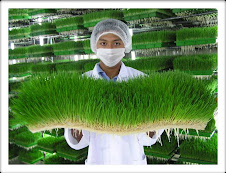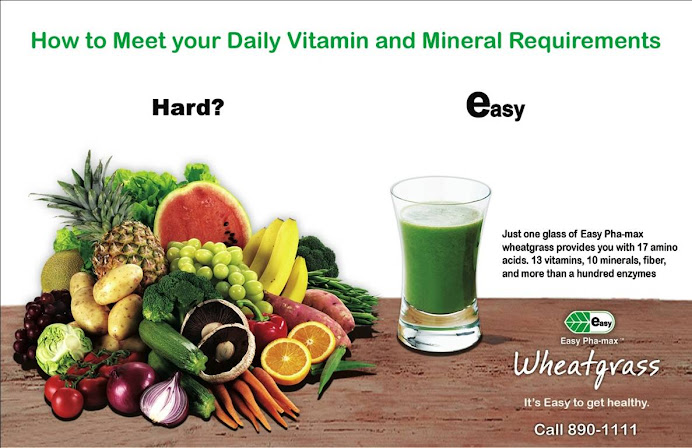“Fifteen pounds of wheat grass is equal in overall nutritional value to 350 pounds of ordinary garden vegetables. We have not even scratched the surface of what grass can mean to man in the future.”—Dr. Charles Schnabel, Father of Wheat Grass Therapy
So, what makes wheatgrass such a potent nutritional treasure? Today, informed health experts agree that the young green shoots of wheatgrass contain a phytonutrient or group of phytonutrients still not able to be isolated or synthesized in the laboratory. This is known as Grass Juice Factor. Its health benefits are profound.
In the late 1920s a Kansas City food chemist Charles Schnabel who was looking for a nutritional source to be added to poultry feed to promote fertility and reduce mortality tried to increase the percentage of alfalfa; next, he tried combinations of twenty different green vegetables. They did not have the health promoting effect Dr. Schnabel sought.
In 1931, he desperately tried something unique, using feed with immature wheat and oat grasses. The poultry responded fantastically. Their winter egg production increased 38 to 94 percent. But not only were more eggs produced, they also had stronger shells, therefore increasing the number of healthy hatchlings. A higher proportion of the layers and offspring remained free of diseases.
Following up on Schnabel’s work, esteemed nutritional scientist Dr. George Kohler and his colleagues at the University of Wisconsin were studying the differences in the nutritional value of cow’s milk produced at different seasons of the year. The researchers discovered that laboratory animals fed summer milk thrived, but became sick and died when given winter milk. Clearly, the higher nutritional value of the summer milk was found to be due to the young grasses cows grazed on in the spring and summer. Thus began research on the Grass Juice Factor, thought to be responsible for this growth effect.
Meanwhile, at the University of California at Berkeley, Dr. Mott Cannon and his colleagues found that guinea pigs failed rapidly when fed a stock ration plus high levels of all the then-known nutrients. Wheatgrass expert author Steve Meyerowitz notes, “When the researchers added standard food supplements such as liver extracts, wheat germ, and brewer’s yeast to the animals’ diets, the guinea pigs remained sick and often died. Addition of dehydrated grass or grass juice brought about dramatic recovery and stimulated growth in these animals.”
Unfortunately, World War II changed that. After the end of the war, large corporations influenced American eating habits and medical choices towards chemicals and drugs, and the companies Dr. Schnabel was associated with discontinued distribution of his grass products. By 1950, Americans had been shifted from a natural to a synthetic approach to health care, and it wouldn’t be until the 1970s that natural grasses would make a comeback, largely due to a few committed individuals. Today you can find fresh wheat grass juice in most natural foods stores and juice bars because of those pioneers, and for good reason.
REFERENCES: Cannon, M. & Emerson, G. “Dietary requirements of the guinea pig with reference to the need for a special factor.” The Journal of Nutrition, 1939:18:155-167. Graham, W., et al. “Grass as a Food: Vitamin Content.” Paper presented April 10,1940, at the 99th meeting of The American Chemical Society. Kohler, G., et al. “Growth stimulating properties of grass juice.” Science, May 8,1936:445. Schnabel, C. “The biologic value of high protein cereal grasses.” Paper presented to the biologic section of the American Chemical Society in New York, April 22,1935.




No comments:
Post a Comment